When it comes to supporting your gut health, few things are as powerful—or as tasty—as probiotics. These live microorganisms work hard behind the scenes, helping balance the bacteria in your digestive system, improving nutrient absorption, and even boosting immunity. But you don’t need to rely on supplements to reap the rewards. In fact, many delicious, everyday foods are naturally rich in probiotics—and adding them to your diet can be both easy and enjoyable.
From tangy yogurt and fizzy kombucha to spicy kimchi and savory miso, probiotic-packed foods come in a variety of flavors and forms. Whether you prefer sipping a refreshing glass of kefir in the morning or tossing a spoonful of sauerkraut onto your sandwich, there’s a tasty option for every palate. Better yet, these fermented favorites often come with added benefits like fiber, vitamins, and antioxidants that further support your overall wellness.
This list highlights 15 of the most flavorful and accessible probiotic-rich foods that nutritionists love and gut-health enthusiasts swear by. You’ll find classics like yogurt and pickles, as well as lesser-known gems like lassi and natto, each offering unique textures, flavors, and strains of beneficial bacteria. Best of all, they’re easy to work into your meals, snacks, or even drinks.
If you’re looking to improve digestion, reduce bloating, or simply support a healthy microbiome, these tasty picks deliver big benefits in every bite (or sip). No need to overhaul your diet—just add one or two of these probiotic powerhouses, and let your gut thank you. Read on to discover which fermented foods belong on your plate—and how to enjoy them for maximum impact.
1. Yogurt: The Classic Probiotic Standard

Sometimes the original remains unbeatable! Regular yogurt—the kind that’s been nourishing cultures worldwide for millennia—delivers a perfect balance of flavor, nutrition, and probiotic power. The fermentation process transforms ordinary milk into a creamy treat teeming with beneficial bacteria.
For maximum gut benefits, choose varieties with “live and active cultures” on the label and minimal added sugars. Plain yogurt offers the most versatility—sweeten it yourself with fruit or honey, or go savory with herbs, olive oil, and a sprinkle of salt.
Beyond probiotics, yogurt provides calcium, protein, B vitamins, and phosphorus. Research suggests regular consumption may support immune function, reduce inflammation, and even help manage weight!
2. Kimchi: Fiery Fermented Cabbage

Taste buds, prepare for liftoff! This Korean staple brings the heat while delivering billions of beneficial bacteria to your gut. Napa cabbage fermented with chili powder, garlic, ginger, and fish sauce creates a complex flavor explosion.
Beyond its probiotic benefits, kimchi contains vitamins A, B, and C plus minerals like iron and selenium. Try it alongside rice bowls, tucked into sandwiches, or stirred into scrambled eggs for a spicy kick.
The fermentation process transforms ordinary cabbage into a living food that continues to develop flavors even after you bring it home. The longer it ferments, the tangier and more beneficial it becomes!
3. Kombucha: Fizzy Fermented Tea

Imagine a beverage that’s part sweet tea, part sparkling cider, with a vinegary twist. That’s kombucha! This fizzy drink starts as sweetened tea that’s fermented with a SCOBY (Symbiotic Culture Of Bacteria and Yeast).
Available in countless flavors from ginger to berry, kombucha offers a refreshing alternative to sugary sodas while delivering probiotic benefits. The slight effervescence comes from the natural fermentation process—no artificial carbonation needed.
Start with just a few ounces daily if you’re new to kombucha, as its active cultures can be powerful. Many enthusiasts claim it helps with digestion, energy levels, and even skin clarity!
4. Sauerkraut: Tangy Cabbage Classic
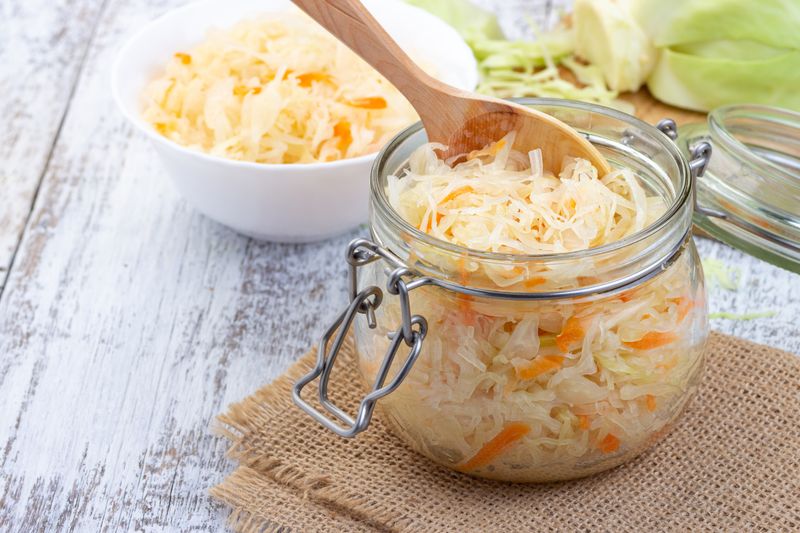
Long before vitamins were discovered, sailors packed barrels of sauerkraut on voyages to prevent scurvy. This simple combination of cabbage and salt creates a fermentation environment where beneficial bacteria thrive.
Raw, unpasteurized sauerkraut delivers a satisfying crunch along with its characteristic tang. Skip the canned varieties and look for refrigerated options with live cultures for maximum probiotic benefits.
Beyond hotdogs and Reubens, try adding sauerkraut to grain bowls, avocado toast, or potato salads for a zippy flavor boost. Just a few tablespoons daily can help maintain digestive balance and support your immune system!
5. Greek Yogurt: Creamy Probiotic Powerhouse
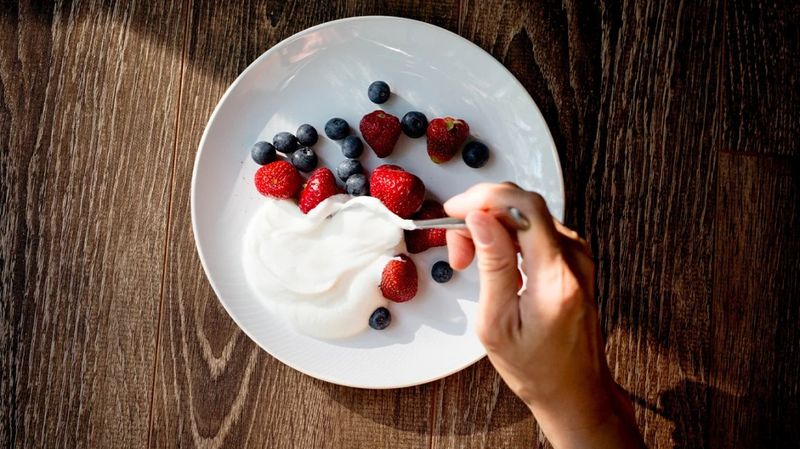
Velvety and versatile, Greek yogurt contains beneficial bacteria that flourish in your digestive tract. The straining process makes it thicker and higher in protein than regular yogurt, while maintaining its probiotic punch.
Many people enjoy this tangy treat with honey and fruit for breakfast, but it’s equally delicious as a sour cream substitute or the base for a refreshing tzatziki sauce. For maximum benefits, look for products labeled with ‘live and active cultures.’
Fun fact: Traditional Greek yogurt-making techniques date back over 5,000 years, with shepherds storing milk in sheep-skin bags that naturally cultured the dairy!
6. Miso: Umami-Rich Fermented Paste
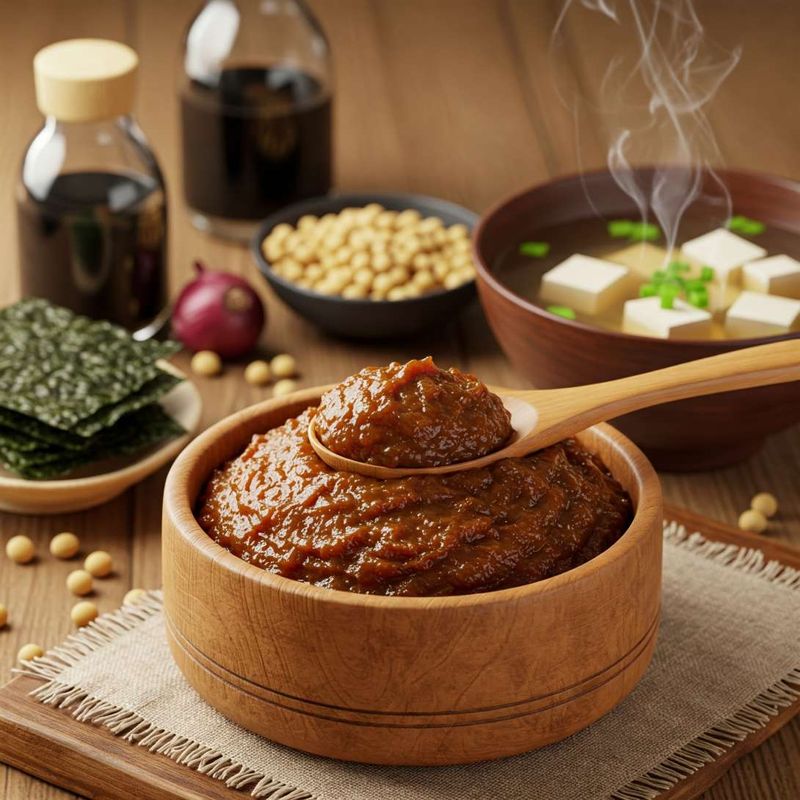
A cornerstone of Japanese cuisine, miso brings depth and complexity to everything it touches. Created by fermenting soybeans with salt and koji (a type of fungus), miso develops a rich umami flavor that transforms ordinary dishes into culinary masterpieces.
Available in varieties ranging from sweet white miso to robust red versions, this probiotic powerhouse adds instant flavor to soups, marinades, dressings, and glazes. Remember not to boil miso directly—add it at the end of cooking to preserve those beneficial live cultures.
Beyond its gut benefits, miso contains essential minerals like zinc and manganese plus vitamin K, important for blood clotting and bone health. Just a tablespoon daily can support your microbiome!
7. Tempeh: Nutty Fermented Soy Cake

Unlike its softer cousin tofu, tempeh offers a firm, chewy texture with a distinctive nutty flavor. Created through controlled fermentation of soybeans with a specific culture, tempeh forms a solid cake bound together by the growth of beneficial mycelium.
High in protein and fiber, tempeh makes a satisfying meat alternative that absorbs marinades beautifully. Try it sliced and grilled, crumbled into tacos, or cubed in stir-fries for a nutritional boost.
Originally from Indonesia, this probiotic food has been sustaining communities for centuries with its complete protein profile and digestive benefits. The fermentation process also makes tempeh’s nutrients more bioavailable than those in unfermented soy products!
8. Kefir: Drinkable Yogurt With Benefits
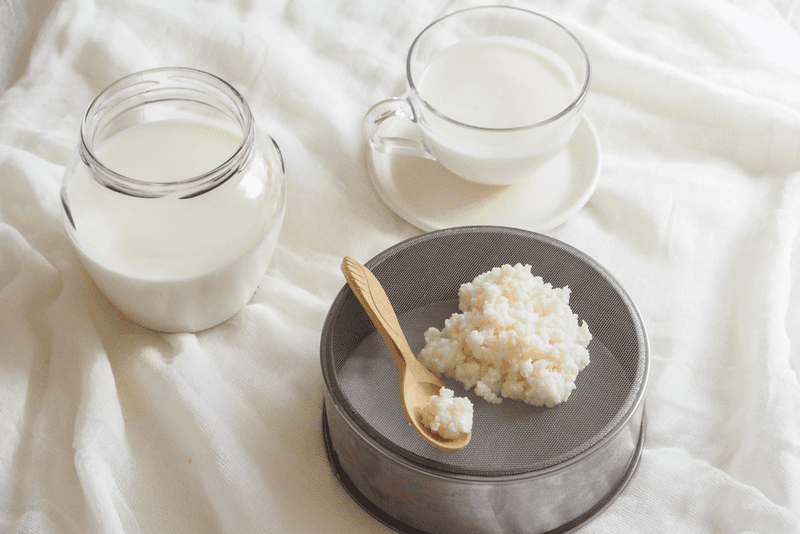
Originating from the mountainous region between Europe and Asia, kefir resembles a pourable yogurt but packs an even bigger probiotic punch. Made by fermenting milk with kefir grains (clusters of yeast and beneficial bacteria), it contains up to three times more probiotic strains than yogurt!
The slightly effervescent texture and tangy taste make kefir perfect for smoothies, overnight oats, or simply drinking straight. Many people who struggle with lactose intolerance find they can enjoy kefir because the fermentation process breaks down much of the lactose.
Beyond gut health, research suggests kefir may support bone health, reduce allergies, and even help with skin conditions.
9. Pickles: Crunchy Fermented Cucumbers
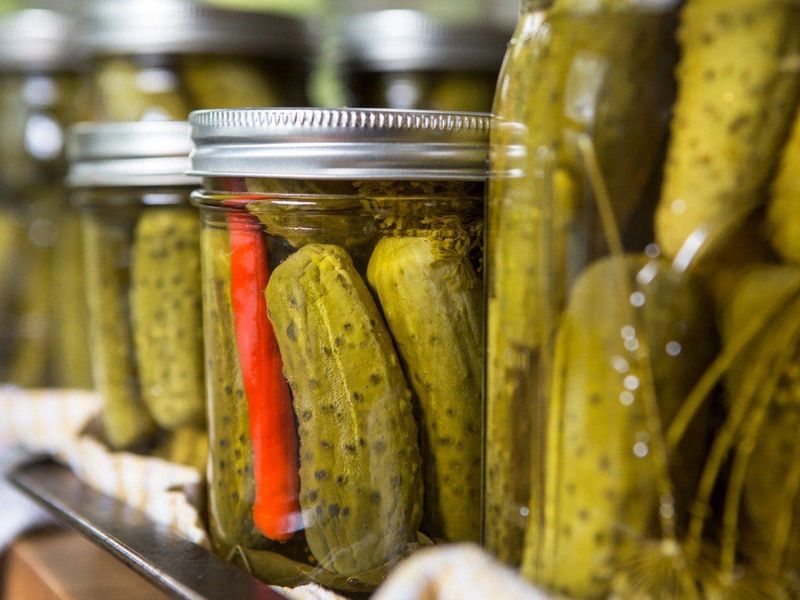
Not all pickles are created equal when it comes to probiotic content! Traditional fermented pickles—made with just salt, water, and spices (no vinegar)—contain live cultures that support digestive health. The satisfying crunch and garlicky tang make them a perfect snack or sandwich addition.
Look for refrigerated pickles labeled “naturally fermented” or “contains live cultures” rather than shelf-stable varieties. The cloudy brine is a good sign that beneficial bacteria are present.
Beyond their probiotic benefits, naturally fermented pickles are low in calories and contain vitamins K and A. The juice itself can even help replenish electrolytes after a workout—some athletes swear by pickle juice for preventing muscle cramps!
10. Natto: Bold Fermented Soybeans
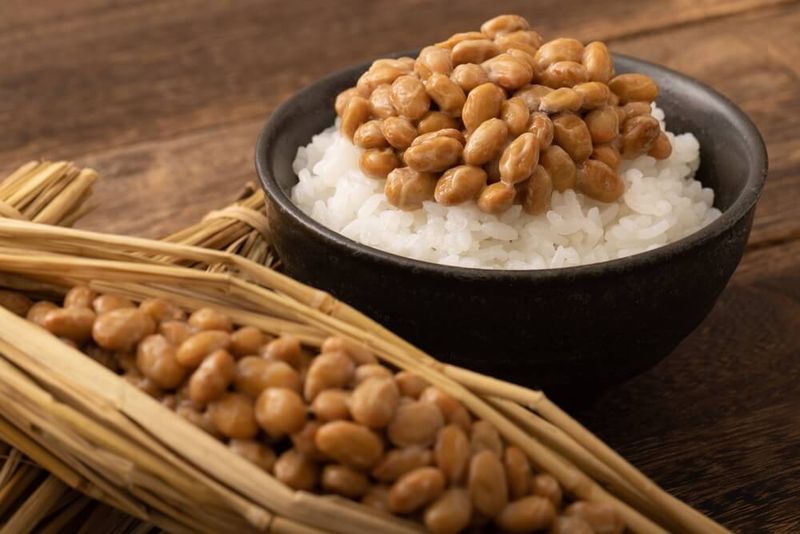
Not for the faint of heart, natto presents one of the more challenging flavor experiences in the probiotic world. These fermented soybeans develop a pungent aroma and sticky, stringy texture that’s beloved in Japan but often surprising to newcomers.
The slimy, stretchy consistency comes from the fermentation process with Bacillus subtilis bacteria. Mixed with a little soy sauce and mustard and served over rice, natto delivers an incredible nutritional profile including vitamin K2, important for bone and heart health.
The unique enzyme nattokinase, found only in this food, has been studied for its potential blood-thinning and cardiovascular benefits. Just a small portion provides powerful probiotic effects!
11. Buttermilk: Tangy Cultured Dairy
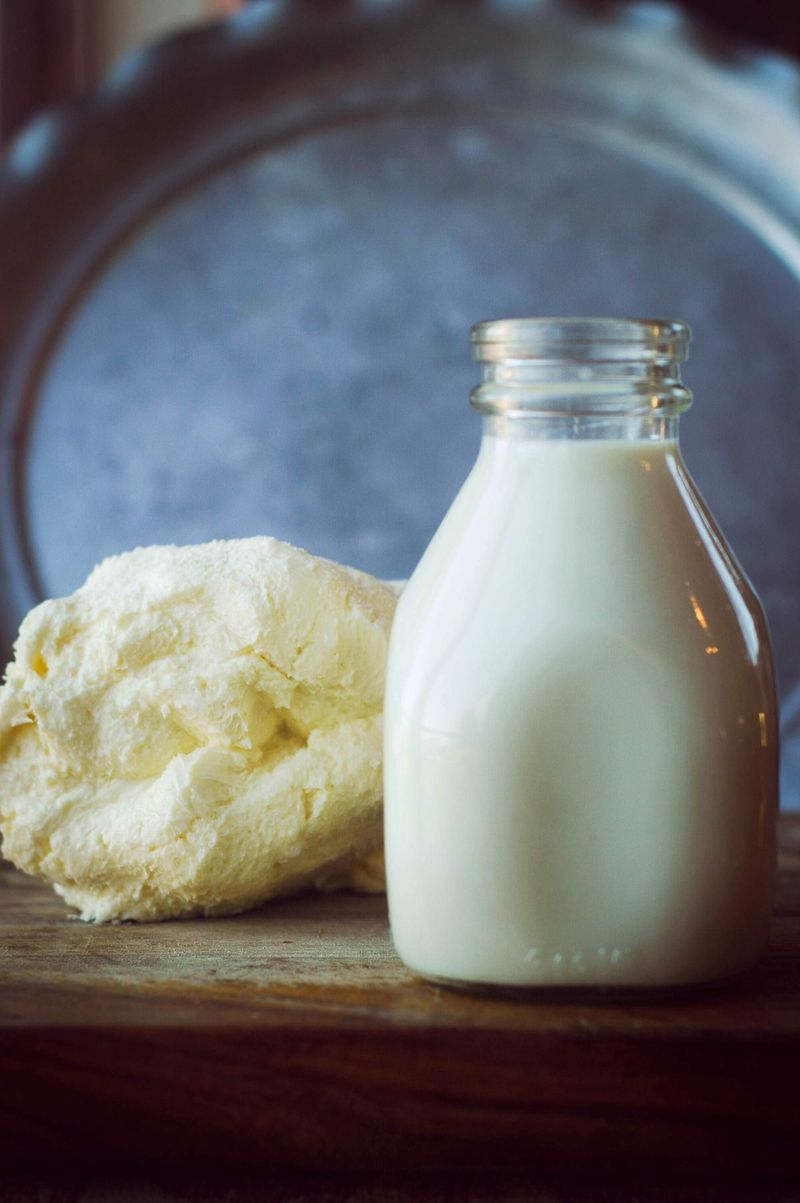
Traditional buttermilk bears little resemblance to its modern grocery store namesake. Real cultured buttermilk contains live bacteria that ferment the milk sugars, creating a thick, tangy liquid packed with probiotics.
Originally the liquid left behind after churning butter, today’s cultured buttermilk is made by adding specific bacterial cultures to milk. The result is a versatile ingredient that adds tenderness to baked goods and tang to dressings while supporting gut health.
Beyond drinking it straight (as many grandparents swore by), use buttermilk in pancakes, marinades for chicken, creamy dressings, or refreshing cold soups. Look for labels specifying “cultured” and “active cultures” for maximum probiotic benefits!
12. Apple Cider Vinegar: Fermented Fruit Tonic

The cloudy, cobweb-like substance floating in raw apple cider vinegar isn’t something to filter out—it’s the probiotic-rich “mother” containing beneficial bacteria and enzymes! Made from fermented apple juice, this tangy liquid has been used as a folk remedy for centuries.
Raw, unfiltered versions retain live cultures that support digestive health. Many people enjoy a tablespoon diluted in water before meals to aid digestion or drizzled over salads for a tangy kick.
Beyond its probiotic properties, apple cider vinegar may help stabilize blood sugar levels and support weight management goals. Start with small amounts as its acidity can be strong—always dilute it and protect your tooth enamel by rinsing afterward!
13. Cottage Cheese: Creamy Cultured Curds
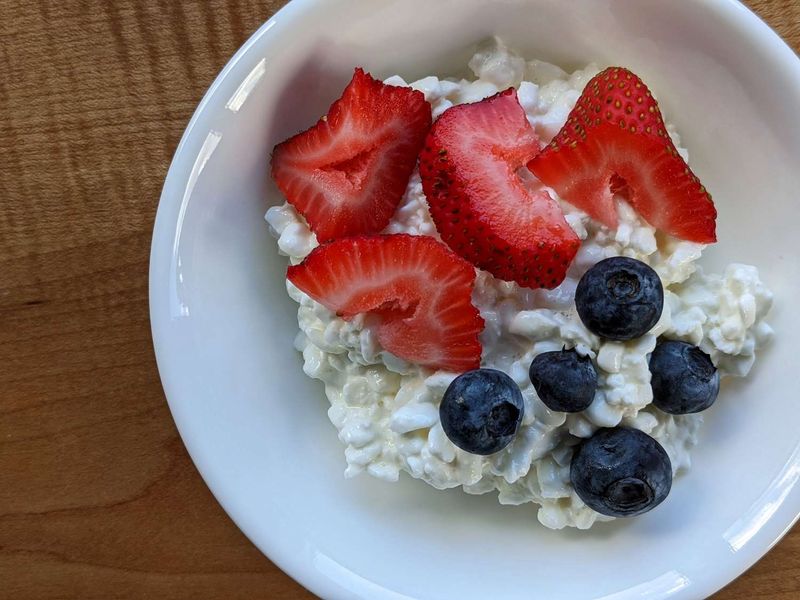
Those little white curds swimming in creamy goodness aren’t just protein-packed—they can be probiotic powerhouses too! When made with active cultures, cottage cheese delivers gut-friendly bacteria along with its impressive nutrient profile.
Check labels for “live cultures” or “probiotics” to ensure you’re getting the digestive benefits. With its mild flavor, cottage cheese works wonderfully in both sweet and savory dishes—try it with fruit and honey or herbs and olive oil.
A single cup provides nearly 25 grams of protein plus calcium, phosphorus, and B vitamins. Unlike many other dairy products, cottage cheese is relatively low in lactose, making it easier to digest for those with mild lactose sensitivity.
14. Lassi: Refreshing Yogurt Drink
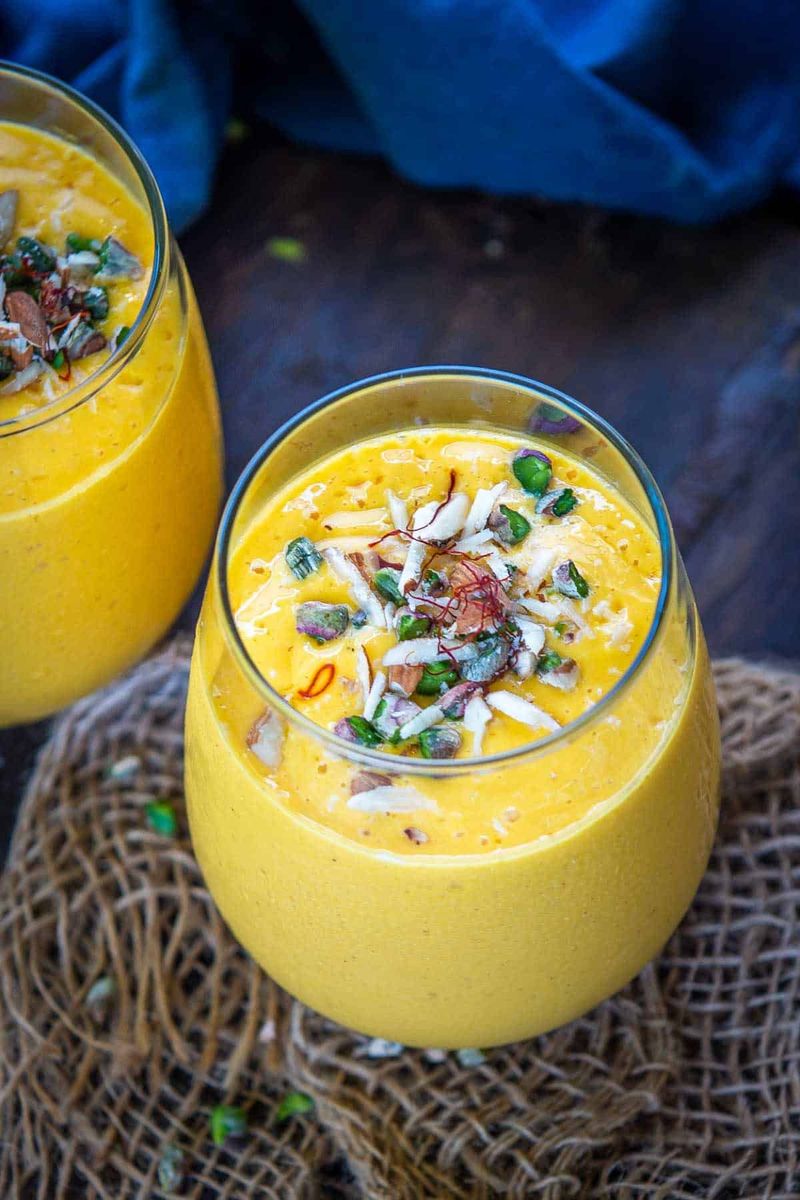
Centuries before smoothies became trendy, South Asians were blending yogurt with water, spices, and sometimes fruit to create lassi—a refreshing probiotic beverage perfect for hot days. The traditional version balances yogurt’s tanginess with just a touch of sweetness or salt.
Sweet lassi might include mango, rose water, or cardamom, while savory versions often feature cumin, mint, or salt. All varieties deliver beneficial bacteria that support digestive health, particularly helpful when enjoying spicy meals.
Making lassi at home is simple—blend yogurt with water, add your preferred flavorings, and enjoy! The probiotic benefits are most potent when using homemade yogurt or commercial varieties with live cultures.
15. Acidophilus Milk: Cultured Dairy Drink

Specially formulated for digestive health, acidophilus milk is regular milk fermented with Lactobacillus acidophilus—a beneficial bacteria strain that takes up residence in your gut. The result is a slightly tangy milk that’s easier to digest than regular varieties.
Many people who experience mild digestive discomfort with regular milk find acidophilus milk more tolerable. The fermentation process pre-digests some of the lactose and adds enzymes that support nutrient absorption.
Unlike yogurt or kefir, acidophilus milk maintains a milk-like consistency and milder flavor, making it perfect for drinking straight, pouring over cereal, or using in smoothies. Look for refrigerated versions with “live and active cultures” on the label for maximum benefits!
Leave a comment